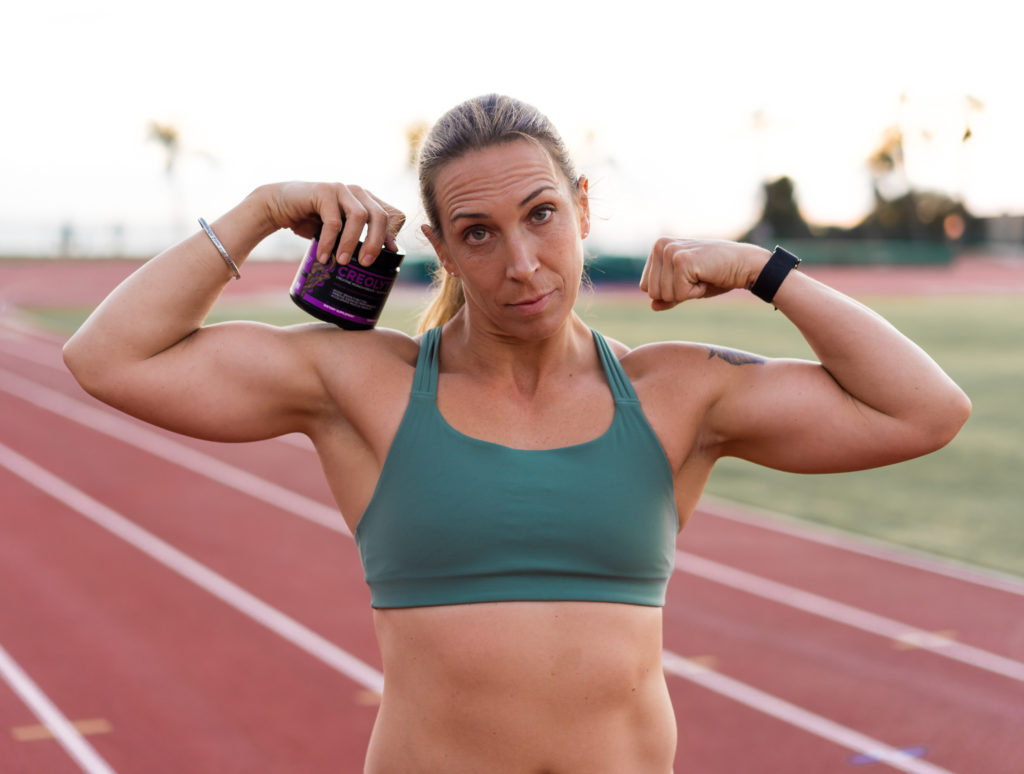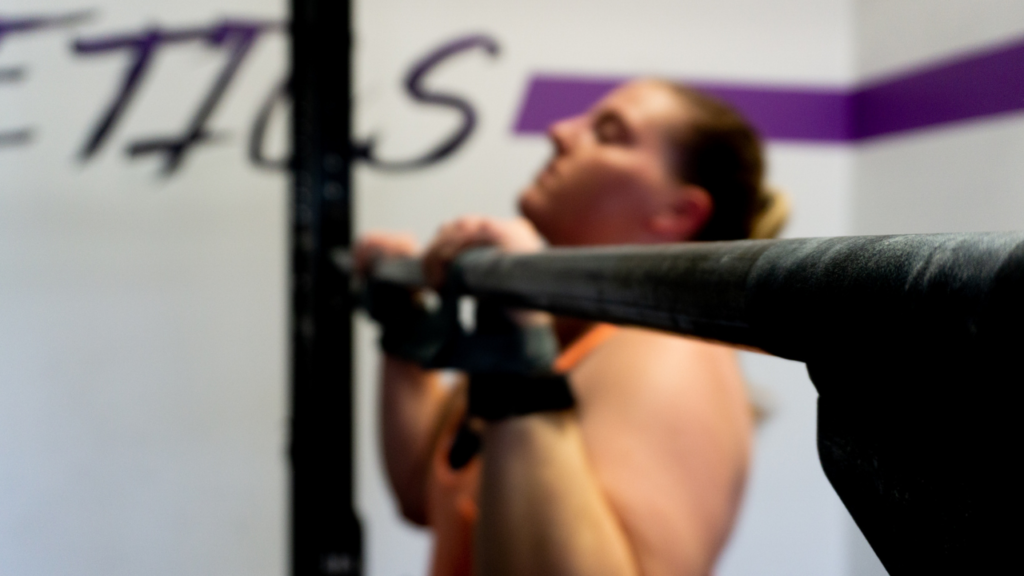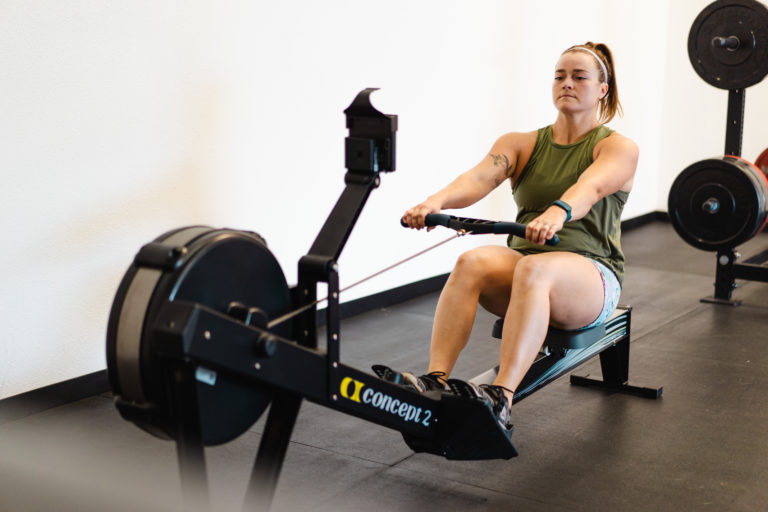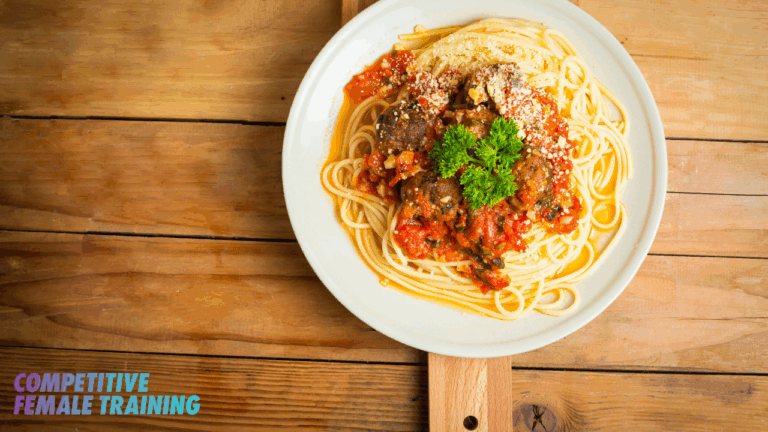How to Lose Body Fat as a Female CrossFitter
By Coach Shawna

Crossfit athletes have unique nutrition needs because of our sport.
We don’t just have long aerobic endurance, or short sprints- we have both, and if you’re a competitive athlete you may see both in your daily training.
Add to this the specific needs of females, and building a cutting protocol to shed fat while protecting muscle must be very specific.
Female athletes, even arguably more so than male athletes, require minimum amounts of fats in their diets, and we typically do better on higher carbohydrates. Our nutrition needs also vary throughout the month depending on where we are in our menstrual cycles.
When building a cutting protocol, these needs must be considered to ensure the ongoing ability to perform and recover well while making changes.
When I create a cutting protocol for my female athletes I begin with the big picture in mind. I first establish what maintenance calories and macros look like for where my athlete’s currently at.
I consider how often they train, what they do for work, what their lives are like daily, etc. I account for how well they sleep, how many rest days they get, and how well they recover.
I want my athletes getting 8 to 9 hours of sleep a night, taking at least one rest day per week, and I want them recovering adequately before we decrease intake.

Sometimes I have to get these things better dialed in before we can go on a cut. If these things aren’t solid, having them decrease calories can have major consequences, such as getting sick or injured. Not to mention if I have an athlete that isn’t eating enough I don’t have a lot to work with to make a deficit.
Let me create an example of an athlete and what I believe to be a healthy foundation.
My athlete is 30 years old, follows a program for competitive athletes (typically trains 2 to 3 hours per day, often broken up into two sessions), works 40 hours a week in an office setting, sleeps 8 to 9 hours per night, and takes two rest days- one as active recovery, the other completely off. She is 20% body fat and does not yo-yo diet.
Based on my calculations, this athlete’s caloric needs for maintenance is 2750 calories per day. This keeps her metabolism healthy while also fueling her workouts and maintaining her current weight.
She comes to me because she wants to lose 3% bodyfat. She wants to make improvements in every aspect of her training, and she recognizes that (to a point) the less body fat we have on our bodies the better we can perform.

We have the discussion that every athlete is different, and we will want to take it slow to make sure that creating a deficit does not affect performance.
We also discuss her expectations, and that being lean or having a 6 pack does not necessarily guarantee better performance, as well as too low a body fat percentage can actually make us perform worse.
Managing these expectations and realities from the get-go sets my athlete up for success along the way.
I generally have my athletes track at maintenance for one week so I can make sure they’ve been eating what they SAY they’ve been eating. This is something you will want to do as well- know how much you’re currently eating to see what changes need to be made.
Going back to needing to have something to work with- if you find you’ve been eating 1800 calories for a long time, we don’t have any wiggle room to make a deficit. You might need to increase cals before we can go back down!

I never create a large deficit from the outset.
I generally aim to have my athletes lose between 1/2 lb to a 1 lb per week AT THE MOST, as I want to minimize the stress a cut can have on their bodies. I also want to manage and minimize the feelings of hunger or depravity they may encounter.
If you’re in a deficit and get huge hunger pains and decide to overeat, your body will store that excess immediately as fat and now we have even more work to do.
I manage deficits and give my athletes controlled refeed days (or even weeks) to help minimize overeating.
I will look at what their work and training schedules are like, as well as life in general. Then create a plan for the days when she needs more or less based on activity and stress.
You will want to do the same. On days where you’re training a lot, you want a smaller deficit. On days when you’re resting or having lighter training, you can create a bigger deficit (but not TOO big- 500 calories AT MOST).
I prefer to have my athletes do 2-3 weeks of a cut, then a week at maintenance, then cut again. This gives the body and mind a break, and lets us schedule around life events.
The macros might look something like this:
| M/T/W | Thur | Fri/Sat | Sun | |
| W1 | 2450- 190P/70F/265C | 2300- 170P/70F/260C | 2450- 190P/70F/265C | 2300- 170P/70F/260C |
| W2 | 2300- 190P/70F/227C | 2450- 190P/70F/265C | 2300- 190P/70F/227C | 2300- 170P/70F/260C |
| W3 | 2450- 190P/70F/265C | 2450- 190P/70F/265C | 2300- 190P/70F/227C | 2450- 190P/70F/265C |
One macro that I never decrease is protein.
My athletes ALWAYS get 1 gram per pound of body weight MINIMUM each day. The science and data is changing on a regular basis, and I know there are lots of arguments on effective doses.
I don’t want my athletes to lose even an ounce of muscle if we can prevent it, and I want to make sure they always have more than enough protein to continue to build muscle. This also helps prevent injury.
Side note- excess protein is NOT “excreted”.. if you consume more protein than your body needs at any one time, it is used to make glucose or simply stored as fat. Protein breakdown excretes nitrogen as a waste product no matter how much or how little you eat.

Now let’s go back to my example athlete.
She has completed a week at maintenance, tracked appropriately, submitted her results and feedback, and I am confident her body is primed and safe to go on a cut.
As I mentioned before, I never go below 1 gram per pound of body weight for protein- so I start her macro calculations there.
Let’s say this athlete weighs 145lbs.
Because I want her body to use additional body fat as fuel, I want to set her cut up so that her body is using that fat at the right times. I only want her to lose around ½ pound of body fat the first week, because I don’t want to stress her system out. So her overall caloric deficit will be about 1750 calories (a pound of fat is approxiamtely 3500 calories).
This deficit will come from cutting out carbs and fat. I don’t want to lower her fat below 50 to 60 grams- as female athletes we need that fat to help us maintain a healthy menstrual cycle.
Creating a 1750 calorie deficit in a week is about 250 calories a day, which will be around 10 grams of fat (90 calories) and 40 grams of carbs (160 calories) total.
Crossfit as a rule is a “glycogen” or carbohydrate dependent sport, meaning that we use carbs and glucose/glycogen during training as our primary fuel sources.
This means that I won’t be expecting my athlete to use fat as fuel during her short metcons or lifting sessions- but I will expect her body to use that fat during longer metcons, aerobic pieces, or in between sessions and after training.

I need to plan her macros around when she’s training, what she’s doing, and her rest days.
I will provide her body with carbs for when she is doing short metcons and lifting. I will also make sure she has carbs for dinner to restock glycogen for the next day, and to help her sleep.
For her longer metcons, I will give her just enough fuel/carbs to start the workout (somewhere around 20 to 30 grams), then expect her body to hit up some fat at around the 45 to 60-minute mark. She will then have a post workout meal of high carb, high protein, low fat.
On rest days and light training days I have her take a 45-60 minute walk to increase fat usage while still allowing her body to recover.
Nutrient timing during a cut is extremely important.
I need my athlete to be able to recover well between sessions, protect the muscle she has, as well as be able to perform at the same level she is used to. This means ensuring her body always has exactly what it needs.
Her meals broken down on any given day might look something like this:
- AM- Wake up, 1 scoop of protein and a banana before session one (lifting and 20 minute metcon).
- During training- 1 scoop of carbs (dextrose, Fuel-5, carbolean, etc)
- Post training- Meal one (4 egg whites, three pieces of turkey bacon, two pieces toast with jam, handful of salad greens).
- Session two- two metcons and a skill piece. Pretraining- another banana and scoop of protein (60 to 90 minutes before).
- Post training- Meal two (8oz chicken, 1 cup of rice, 1/2 cup of green beans).
- Meal three- similar to meal two (6 oz meat, 1/2 cup of carbs, 1 cup of green beans or other veggie).
On rest days she will get close to maintenance calories.
I want to make sure she replenishes her glycogen stores for the next days training, and I have to make sure that she is sleeping well. Giving her body a break from the cut also protects her immune system and helps her to stay feeling good.
This cycle then repeats itself weekly until we have reached the desired results. As she leans out and potentially drops weight, her maintenance calories will go down, as well as what she gets on any given training day.
As mentioned earlier, I generally cycle my athletes on two to three weeks of decreased calories with one week of maintenance between mini cuts.
I expect my athlete to abstain from alcohol during this time- alcohol negatively impacts fat loss and impairs testosterone levels, sleep, and recovery.
It’s 100% possible to lean out while staying competitive, but it should be done strategically to guarantee a good outcome.
Don’t try to go too fast, and plan for regular refeeds to keep your metabolism and hormone cycle healthy!
Questions? Comments? Feel free to email me or comment below! Want to have help setting your macros? Check out our nutrition coaching page.






